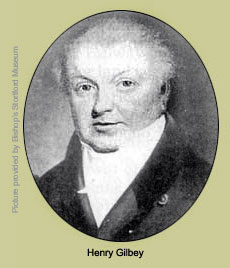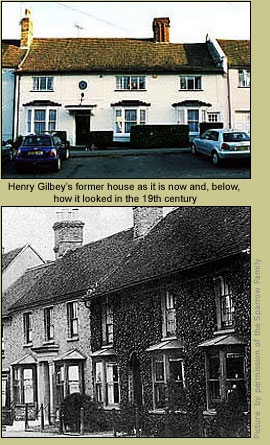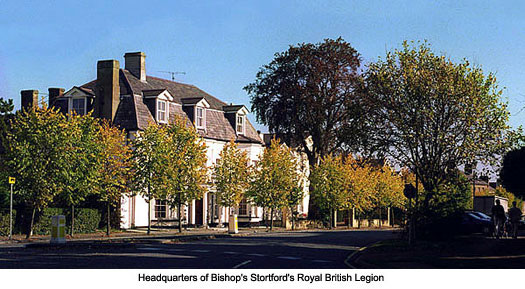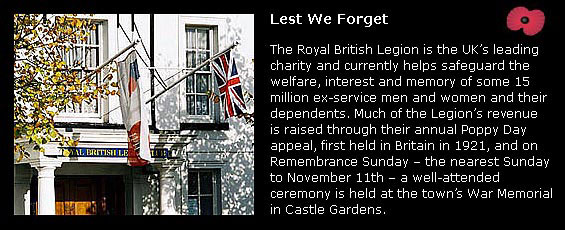|
|
Henry Gilbey
|
|
|
|
|
|
 The restored No 11 Windhill, known as ‘The Links’, is the former home of Henry Gilbey (1789–1852), father of Sir Walter Gilbey but renowned in his own right as the owner of a stagecoach service that operated between Bishop’s Stortford and London in the early 19th century. The restored No 11 Windhill, known as ‘The Links’, is the former home of Henry Gilbey (1789–1852), father of Sir Walter Gilbey but renowned in his own right as the owner of a stagecoach service that operated between Bishop’s Stortford and London in the early 19th century.
Henry was one of three sons born to Daniel and Susan Gilbey who lived at Stansted, Essex. The Gilbey family tree records kinsmen living in the nearby village of Widdington as early as 1668 and his grandfather, also Daniel, had been Head Ranger of Hatfield Forest between 1759 and 1784.
But Henry's father chose a different course in life, becoming a man of property and landlord of three coaching inns on the main London to Cambridge road. One of these was the Bell Inn at Stansted (now the Feathers), which Henry ran for him in his youth and continued to do so after he married Elizabeth Bailey in 1813 at the age of 24.
However, the severe economic depression that followed the Napoleonic wars badly affected trade, and in 1818 the couple moved to this house where they raised seven children – five of them, including Walter, born here.
 Henry then formed a partnership with James Bolton, son of the landlord of the Crown Inn at Hockerill, and ran a coach service to Newmarket and Cambridge. He split with Bolton in 1823 but formed another partnership with William Low of Saffron Walden, running a coach service on the same route. The following year he went into business on his own, starting a second service that ran between this house and the George Hotel in North Street, before continuing on to the Bull Inn at Aldgate, London. On Mondays his coach left the George at 5am, and on all other days of the week departed at 8am, Gilbey himself usually taking the reins. The return journey left London at 4pm. Coaches ran daily during the summer months and on alternate days in winter. Henry then formed a partnership with James Bolton, son of the landlord of the Crown Inn at Hockerill, and ran a coach service to Newmarket and Cambridge. He split with Bolton in 1823 but formed another partnership with William Low of Saffron Walden, running a coach service on the same route. The following year he went into business on his own, starting a second service that ran between this house and the George Hotel in North Street, before continuing on to the Bull Inn at Aldgate, London. On Mondays his coach left the George at 5am, and on all other days of the week departed at 8am, Gilbey himself usually taking the reins. The return journey left London at 4pm. Coaches ran daily during the summer months and on alternate days in winter.
On the night of 26 December 1836, while returning to Bishop’s Stortford from London, he battled through one of the heaviest snowstorm ever recorded in this country but finally had to abandon his coach in South Road. Henry's epic journey turned him into a local legend and he soon became the subject of a poem penned by a local scribe (See Guide 12 - South Road).
In the summer of 1841, with the imminent arrival of Northern and Eastern’s railway, he was vociferous in opposing the company’s proposed extension of the line northwards from Bishop’s Stortford to Newport. But all to no avail. Forced out of the coaching business he sold his house and returned to inn keeping at the Red Lion, Hockerill. Sadly, his term there was brief, for he died the following year, aged just 52. His prominent gravestone can still be seen in St Michael’s churchyard near to the South porch. The inscription reads: Henry Gilbey of this town, many years Coach Proprieter, Died September 29th 1842 aged 52
|
|
|
|
|
|
|
In 1916 hundreds of injured and wounded soldiers were being returned home from the war in Europe. Hospitals were cleared as quickly as possible to accommodate them but the result was that many men, including the disabled, were sent away only half cured. To add insult to injury they received no back pay, no pension, and no assistance of any kind. In fact, the government's only reward to these men was a civilian suit, a cheap cap, and a muffler instead of a collar and tie. Hundreds, if not thousands of men who had fought for their country were forced to go to the old Board of Guardians to seek assistance.
To say there was bad feeling would be an under statement. But gradually, ex-servicemen began to form into small groups and as the movement expanded, three separate bodies came to the fore: The National Association of Discharged Soldiers and Sailors, The National Federation of Demobilised Soldiers and Sailors, and Comrades of the Great War Association. The reason for the latter was because officers were not allowed to join the other two groups. Despite some political infighting between the three groups they remained focused, and public demonstrations soon forced the government to give ex-servicemen better terms on pensions. Any person with total disability was given 25 shillings (£1.25p) a week, later increased to £2 per week plus allowances to keep pace with the cost of living.
To help, King George V attended a rally in Hyde Park and inspired men to fight harder to give assistance to ex-servicemen. In 1917 he founded *King George's Fund for Sailors (KGFS). At the end of the war the three original organisations agreed to merge but only included the rank and file. Field Marshall Earl Haig then formed an officers' organisation with the idea of uniting all organisations into one. In June 1921, at the Queen's Hall, London, the British Legion was formed to give practical help and companionship to all ex-servicemen of the First World War and their dependants. The Bishop's Stortford branch was formed that same year and first administered from a small air raid hut behind the town’s original football ground at Rhodes Avenue (See Guide 12).
*KGFS is the only central fund making grants to nautical charities which look after the welfare needs of seafarers and their dependants in the Royal Navy, the Merchant Navy and the Fishing Fleets.
From the start, a strong membership was sustained in Stortford but with the ending of World War II several Legion members, including Boyd Gibbins, Bernard Sparrow and Jim Fuller, proposed that a more fitting premises be found to accommodate servicemen returning from the war. Two other prominent members, Jack Tissiman and Jack Gallimore, then became instrumental in securing a mortgage on No 28 Windhill – a residential property owned by their friend Phillip Rust – which was purchased for £3,000 on 20 July 1948 out of the proceeds of their Social Centre Fund and voluntary donations. An invitation for a member of the Royal family to attend the grand opening was turned down, as was a request to war-time entertainer Bing Crosby, but the ceremony was finally attended by three film stars of the day – Dereck de Marney, Rosalind Johns and Meg Jenkins.
Now a listed building this early 19th century property, with two canted bay windows and Greek Doric porch, once commanded a substantial plot of land that stretched northwards as far as Hadham Road. There, the original boundary wall is still in place, as are the two small entrance gates that gave access to the grounds, but in 1957 the Legion sold the land to property developers for £2,000. Now, where there was once a rose garden and two bowling greens is a housing development named Regency Close. The club, currently one of 3,000 such establishments worldwide, had a branch membership of 950 at its peak in 1958 but the number currently stands at around 600. Approximately half of these are honorary members. The property is still used by the Legion for meetings and social events, and to help pay for its upkeep the second floor is rented out as office space.
The ground floor displays historical exhibits along with many fine watercolours of local scenes painted in the early 1900s by a former Legion member, John Blake. There also hangs here a photograph of Allied warship K134 – otherwise known as HMS Clover – given to the town in 1993 by a former crew member. Launched on 30 January 1941 the warship was a formidable U-Boat hunter of the Second World War, used extensively in the North Atlantic to protect Britain's vital supply routes. It was also the first corvette to reach the Normandy beaches on D-Day and subsequently made 20 trips to the French shore.
HMS Clover's association with the town goes back to 1942/3 when a national war effort, called Warship Week, encouraged the public to donate money and buy a warship. The people of Bishop's Stortford raised the phenomenal amount of £127,000 (in excess of £1m in today's money) enabling them to adopt HMS Clover. As a result of this, the 47 crew members of the Flower Class Corvette received regular gifts of food and clothing from the town. After the war K134 became a merchant ship named Cloverlock, then later sailed to China where new ownership renamed it the Kai Feng.
The Naval officer who was at the helm of HMS Clover during the war was Thomas Evelyn Fanshaw. In an illustrious career he was awarded the Distinguished Service Cross in 1944, mentioned in dispatches in 1945, and received Commander of the British Empire in 1971. He served on many ships after the war, was made a captain in 1966, and from 1970–71 was aide-de-campe to the Queen. Between 1972 and 1981 he was Captain of the Sea Cadet Corps and also became Nautical Assessor to the House of Lords. In July 1993, he and other crew members joined the celebrations when the Bishop's Stortford branch of the Royal Naval Association commemorated the town's adoption of HMS Clover. Clover Avenue, off Great Hadham Road, Bishop's Stortford, is named in honour of the ship. Captain Fanshaw died at his home in Petersfield, Hampshire in May 2000, aged 81. Further details of his naval career can be found at:
www.unithistories.com/officers/RNR_officersF.html
The war memorial in Castle Gardens is dedicated to the 314 men and women of Bishop's Stortford who fell in both World Wars. Listed are 207 names from World War I and 107 from World War II. An almost complete list of the fallen can be found at:
www.roll-of-honour.com/Hertfordshire/BishopsStortford.html
|





 The restored No 11 Windhill, known as ‘The Links’, is the former home of Henry Gilbey (1789–1852), father of Sir Walter Gilbey but renowned in his own right as the owner of a stagecoach service that operated between Bishop’s Stortford and London in the early 19th century.
The restored No 11 Windhill, known as ‘The Links’, is the former home of Henry Gilbey (1789–1852), father of Sir Walter Gilbey but renowned in his own right as the owner of a stagecoach service that operated between Bishop’s Stortford and London in the early 19th century. Henry then formed a partnership with James Bolton, son of the landlord of the Crown Inn at Hockerill, and ran a coach service to Newmarket and Cambridge. He split with Bolton in 1823 but formed another partnership with William Low of Saffron Walden, running a coach service on the same route. The following year he went into business on his own, starting a second service that ran between this house and the George Hotel in North Street, before continuing on to the Bull Inn at Aldgate, London. On Mondays his coach left the George at 5am, and on all other days of the week departed at 8am, Gilbey himself usually taking the reins. The return journey left London at 4pm. Coaches ran daily during the summer months and on alternate days in winter.
Henry then formed a partnership with James Bolton, son of the landlord of the Crown Inn at Hockerill, and ran a coach service to Newmarket and Cambridge. He split with Bolton in 1823 but formed another partnership with William Low of Saffron Walden, running a coach service on the same route. The following year he went into business on his own, starting a second service that ran between this house and the George Hotel in North Street, before continuing on to the Bull Inn at Aldgate, London. On Mondays his coach left the George at 5am, and on all other days of the week departed at 8am, Gilbey himself usually taking the reins. The return journey left London at 4pm. Coaches ran daily during the summer months and on alternate days in winter.